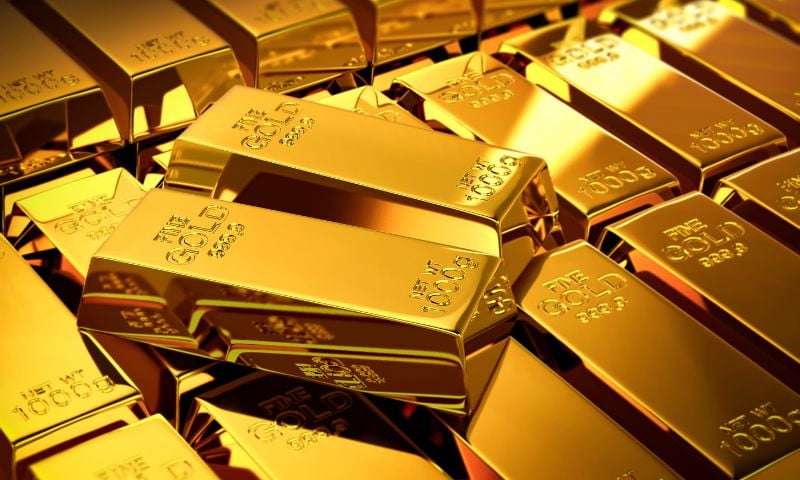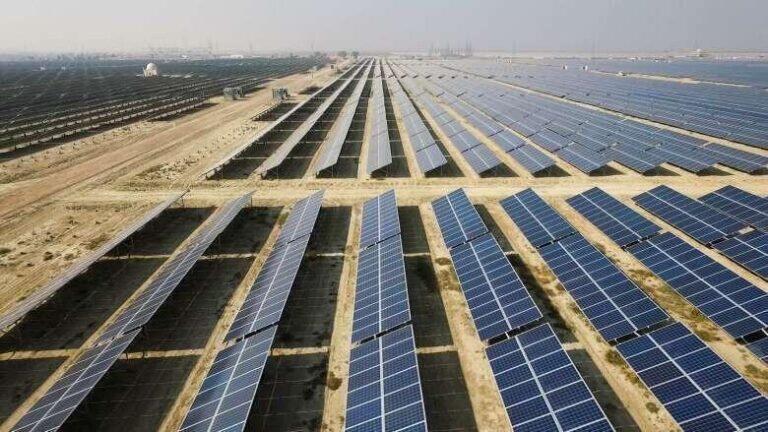
|
Getting your Trinity Audio player ready...
|
In a significant development for gold investors and consumers in Pakistan, the price of gold surged by Rs2,500 per tola (11.66 grams) on Friday, reaching Rs280,500 per tola. This surge is in line with international trends and marks the fifth consecutive day of price increases. Gold’s upward trajectory, observed over the past few days, reflects a combination of geopolitical tensions and a shift in investor sentiments toward safe-haven assets like gold.
Gold Prices on the Rise: Domestic and International Markets Reflect Similar Trends
The price increase on Friday followed a pattern of growth that has been observed throughout the week, with gold prices increasing by Rs13,100 (5%) over the past five days. Gold is now nearing its all-time high, falling just Rs7,400 short of the peak price of Rs284,900 per tola recorded in late October 2024.
International Gold Market Performance
Gold prices surged globally as well, with an increase of $25, pushing the price per ounce to $2,693. This marked a cumulative gain of $131 per ounce over the past five days. In late October, the global gold price reached a record high of $2,784 per ounce, showcasing the rising interest in the precious metal.
Geopolitical Factors Drive Gold’s Appeal
Abdullah Abdul Razzak, a member of the All Pakistan Sarafa Gems and Jewellers Association, attributed the recent rise in gold prices to geopolitical instability, particularly tensions in Europe. Recent reports of Russia threatening Ukraine with the potential use of nuclear weapons have sparked fears and escalated demand for gold, traditionally seen as a safe haven in times of uncertainty.
In the wake of such tensions, investors and individuals alike have sought to hedge their risks, causing gold prices to continue climbing. Razzak noted that such geopolitical crises typically result in increased bullion demand, which drives up the prices of gold. The uncertainty surrounding international conflicts seems to be contributing significantly to the current surge in gold prices.
Currency Strengthens: Rupee Gains Against US Dollar
While the focus has been on rising gold prices, the Pakistani rupee also saw positive movement against the US dollar, closing at Rs277.76 in the interbank market. This marks a Rs0.20 appreciation in the domestic currency, continuing the positive trend from the previous day.
Rupee Gains Support from Foreign Exchange Reserves
The State Bank of Pakistan (SBP) reported a two-day cumulative rupee gain of Rs0.28, closing at Rs277.76 per dollar. Meanwhile, the Exchange Companies Association of Pakistan (ECAP) noted a Rs0.17 improvement in the open market, where the rupee closed at Rs278.77 per dollar.
One key factor behind the rupee’s recent strength is a notable increase in Pakistan’s foreign exchange reserves. The SBP data revealed that the reserves grew by $29 million, reaching a 31-month high of $11.29 billion for the week ending November 15, 2024. This rise in foreign reserves suggests a healthier foreign currency supply, which, in turn, supports the rupee’s stability in the short to medium term.
Factors Influencing Gold Prices and Currency Trends
Several factors contribute to the movements in both gold prices and the Pakistani rupee’s exchange rate. Understanding these dynamics helps both investors and policymakers gauge the economic landscape more effectively.
Geopolitical Tensions and Their Impact on Gold Prices
As mentioned, geopolitical instability is a primary driver behind the recent surge in gold prices. Markets often react to uncertainty with a shift towards assets like gold, which is seen as a store of value during times of global instability. With the ongoing tensions in Europe, coupled with other potential geopolitical hotspots around the world, gold is expected to remain a valuable asset.
Domestic Economic Indicators and the Strength of the Rupee
The appreciation of the rupee can be attributed to several factors, with foreign exchange reserves playing a crucial role. Pakistan’s increase in reserves is a positive indicator of economic health, which has helped stabilize the rupee against the US dollar. Additionally, the influx of remittances, foreign direct investment (FDI), and support from international financial institutions contribute to strengthening the local currency.
The Role of Political Factors in the Currency Market
Political developments and changes in leadership, such as the upcoming U.S. presidential election in 2025, also play a role in shaping currency movements. If political factors lead to a more stable global environment, it could reduce demand for gold and affect the exchange rates of emerging market currencies like the Pakistani rupee.
Expectations for Gold and the Pakistani Rupee in the Coming Months
Gold Market Outlook: Volatility Expected
Gold is expected to continue its volatile path in the coming months. Abdullah Abdul Razzak suggested that geopolitical tensions, especially in Europe, could keep gold prices elevated until January 2025, when U.S. President-elect Donald Trump takes office. While Trump has expressed intentions to end global conflicts, there is still uncertainty surrounding the geopolitical landscape. If tensions ease, the price of gold may stabilize or even decline in the medium term.
Rupee Outlook: Stabilization Likely with Foreign Reserves Support
The rupee is expected to maintain its stability in the short term due to the recent increase in foreign exchange reserves. If the reserves continue to grow, it could further support the rupee’s value against the dollar. Additionally, the easing of geopolitical tensions and a stable domestic economic environment could help prevent significant fluctuations in the currency market.
Frequently Asked Questions (FAQs)
1. What caused the recent surge in gold prices in Pakistan?
The surge in gold prices is primarily due to rising geopolitical tensions, particularly in Europe, and global economic uncertainty. The demand for gold as a safe haven asset during times of instability has driven the price up.
2. How have gold prices been trending globally?
Globally, gold has risen by $131 per ounce in the past five days, reaching a price of $2,693 per ounce. This surge follows a record high of $2,784 per ounce in October 2024.
3. What impact has the geopolitical situation in Europe had on gold prices?
The geopolitical crisis in Europe, especially with Russia’s threats to Ukraine, has caused a surge in demand for gold. Investors often turn to gold as a safe asset during times of conflict, driving up its price.
4. Why is the Pakistani rupee strengthening against the US dollar?
The rupee’s strength is attributed to an increase in Pakistan’s foreign exchange reserves, which reached a 31-month high. This indicates a healthy supply of foreign currency in the market, supporting the rupee.
5. Will gold prices continue to rise in the coming months?
Gold prices are expected to remain volatile. If geopolitical tensions persist, the price may continue to rise. However, a resolution of global conflicts could lead to a decline in prices.
Conclusion
The combination of rising gold prices and a strengthening rupee provides important insights into Pakistan’s economic situation. While global tensions contribute to the demand for gold, the stability of the rupee reflects positive changes in the country’s foreign exchange reserves. Both markets are expected to remain volatile in the coming months, influenced by both local and global factors.
SEE ALSO:





